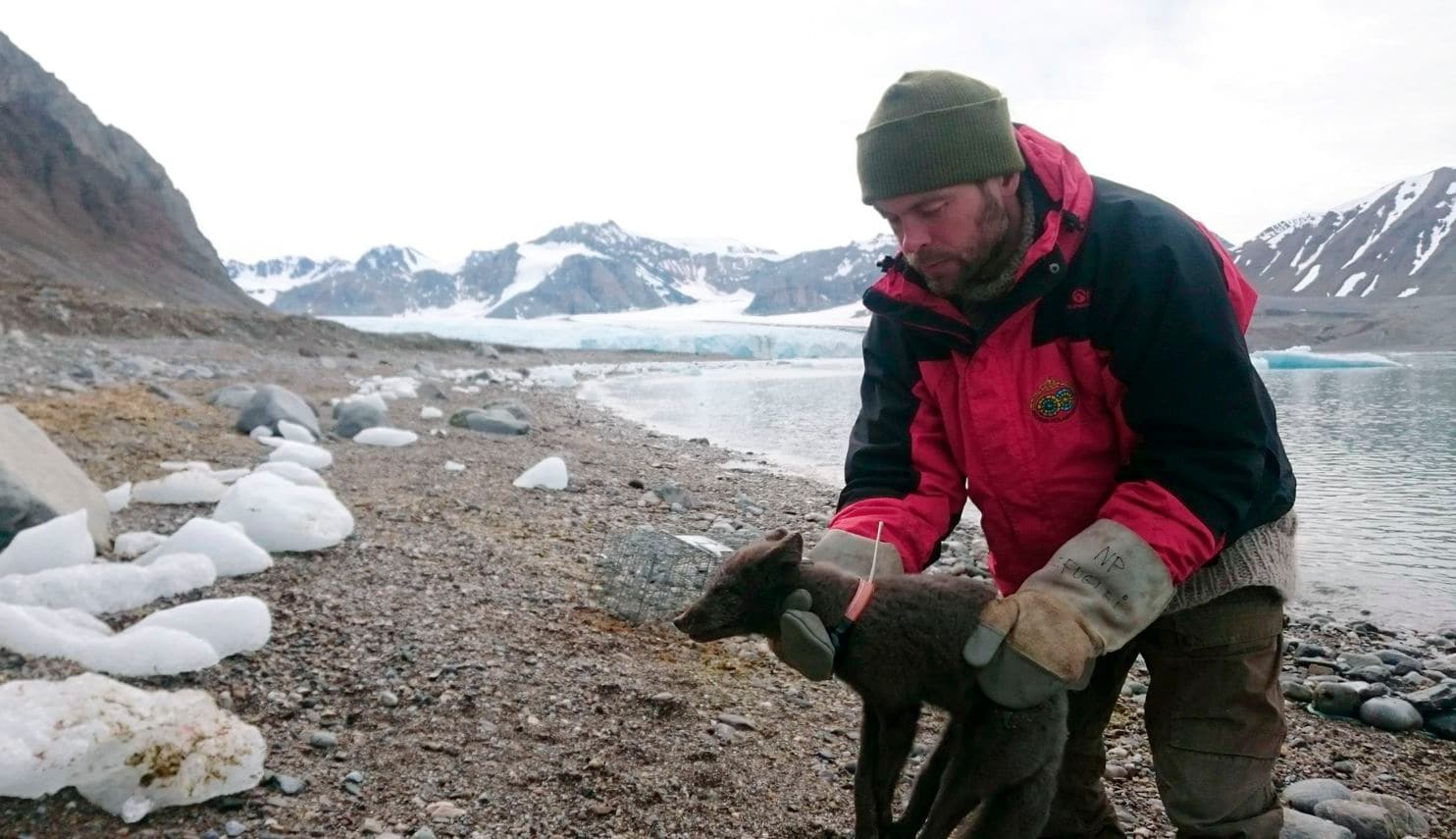News broke this week of an unheralded 2018 arctic expedition that happens to be the longest unsupported polar trek ever recorded.
A female arctic fox, fitted with a satellite collar, walked over 3,500km in 76 days from the Norwegian arctic island of Spitsbergen to Ellesmere Island in Canada. Mainly, it traveled on the sea ice, averaging over 46km per day, but when it crossed a section of the Greenland ice sheet, it covered an astonishing 155km in 24 hours.
It then padded over the 60km-wide ice bridge between Canada and Greenland — a ticklish crossing that Inuit from Greenland did for centuries to hunt muskoxen in Canada.
Finally, the fox seems to have traversed Ellesmere Island via an obscure route called Copes Bay Pass — one of six non-glacial east-west crossings of Ellesmere Island. Finally, it walked the frozen fiords to the Fosheim Peninsula, just north of Ellesmere’s Eureka Weather Station.

The young female arctic fox in Spitsbergen, before the great trek.
Its improbable marathon featured both determination and luck. From Spitsbergen, it kept losing ground as it moved west because of the easterly ice drift. After venturing onto the ice sheet of Northwest Greenland, it happened to come down at almost the perfect spot to cross into Canada.
The North Water, the largest polynya in this part of the Arctic, traditionally ends just south (dark area in the photo below). But because of warming climate, this ice bridge sometimes doesn’t form any more, or it opens prematurely. In 2019, for example, the ice broke up early, and the fox would not have been able to cross to Canada. But in late May 2018, shown below, the bridge was in perfect condition.

Satellite photo from late May 2018, around the time the fox crossed the sea ice from Greenland to Canada (dotted line). It then continued overland through a pass and along frozen fiords (solid line) to Ellesmere Island’s Fosheim Peninsula.
It then managed to find its way through a narrow pass and wandered along the sea ice until it stumbled onto an ideal location for a tired, hungry arctic fox: the Fosheim Peninsula. Sometimes known as Ellesmere’s Serengeti, it abounds in muskoxen, hare, arctic wolves and lemmings. Clearly, the fox liked what it saw, because it stayed there from July 2018 until at least February 2019, when the satellite collar stopped working.

Arctic hare (a fox staple) and muskoxen on the Fosheim Peninsula. Photo: Jerry Kobalenko
Related reading:
Research article: One Female Fox’s Long Run Across Sea Ice






